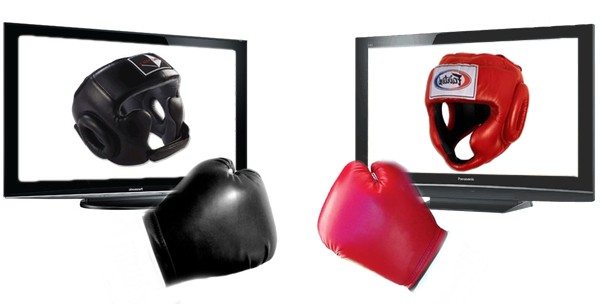 Which Television is Best for Your Home Theater? Nowadays there is such a wide array of televisions that it can seem overwhelming to choose the best one for your home theatre.
Which Television is Best for Your Home Theater? Nowadays there is such a wide array of televisions that it can seem overwhelming to choose the best one for your home theatre.
To simplify things, televisions fall into four main categories: LCD, LED, Plasma and Rear-projection TV (DLP). Below, we’ll look more closely at each category.
LCD TVs
- Size: 19 in to 65 in
- Brands: All
- Pros: Energy efficient, models with matte screens work well in bright rooms
- Cons: Doesn’t work well in dark rooms and is usually limited to a 160 degree angle for viewing optimization.
- Best For: General use in brighter rooms where potential flaws won’t be as visible as they are in dark rooms.
LED TVs
- Size: 32 in and larger
- Brands: All
- Pros: Even more energy efficient than LCD; thin panels; improved picture quality.
- Cons: Typically costs more than LCD or Plasma.
- Best For: People who want the latest and greatest technology. People who want the thinnest panel.
Plasma TVs
- Size: 42 in and larger
- Brands: Panasonic, Samsung, LG
- Pros: Black-level performance in dark room; works in all viewing angles.
- Cons: Uses high power; glass screen can reflect light in bright rooms.
- Best For: General use in all except the brightest rooms.
Rear Projection TVs (DLP)
- Size: 60 in and larger
- Brands: Mitsubishi
- Pros: DLP (Digital Light Processing) Technology; Color-Wheel enhances color reproduction; film–like picture quality.
- Cons: Depending on usage, every 3-5 years, you will have to purchase a DLP replacement bulb.
- Best For: Simply put, those who want the biggest screen for the buck.
Closer Comparison: LED/LCD TV vs. LCD TV
An LED TV is a LCD TV that uses LEDs (light-emitting diodes) to illuminate the display. This can be done either by placing LEDs across the entire back of the display or around the perimeter, which is referred to an “edge lit” display. Both options use less energy than LCD TVs, which are lit with fluorescent tubes and plasmas. Since LEDs are designed differently than standard fluorescent backlight systems, the new LED backlit LCD sets offer the following differences over standard LCD sets:
- Energy efficiency
- No mercury used as in some other LCD backlight systems
- Color saturation is more balanced
- In LED/LCD TVs using the Full Array backlight method, there is little or no light leakage in dark scenes. This helps maximize better black levels than traditional or LED Edge-lit LCD televisions.
- LED/LCD TVs that use the Edge backlight method can be made much thinner than both standard/LCD and Full Array/LED/LCD TVs
Why Choose Plasmas?
A plasma TV will perform extremely well under most lighting conditions and TV watching angles. The picture is smooth, colorful, and (best of all) wide. Each pixel cell has its own transistor electrode, which creates evenly lit images across the display. Most of the newer plasma displays also have built-in line doubling to improve the image quality of even low-resolution video signals. Some are capable of displaying 16.77 million colors, which is truly amazing.















